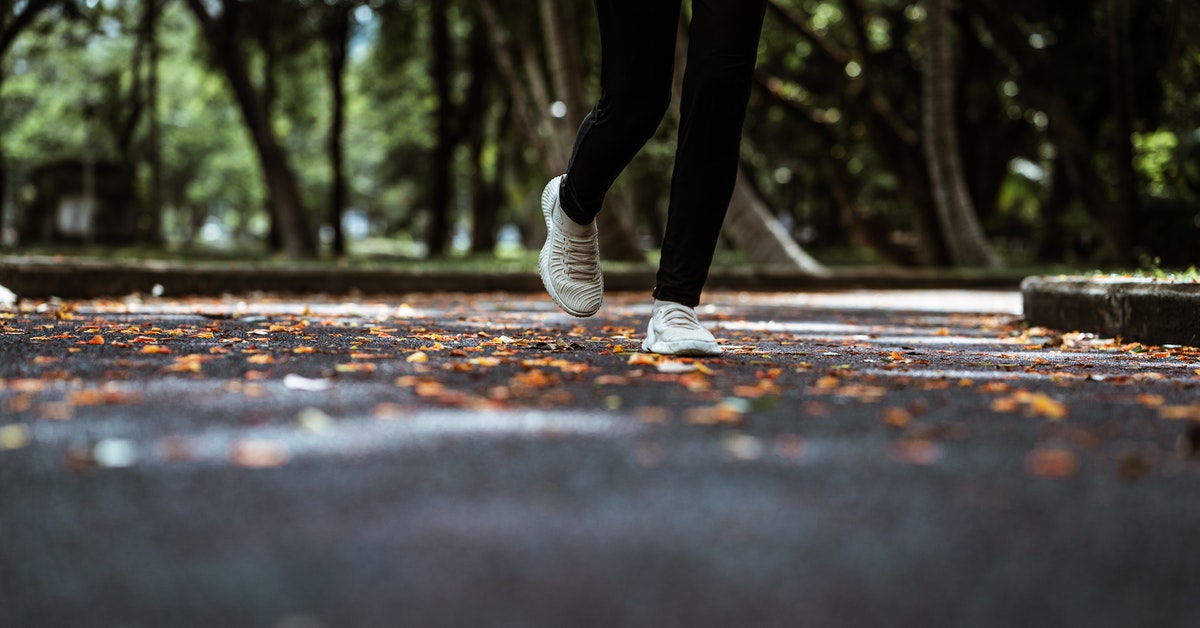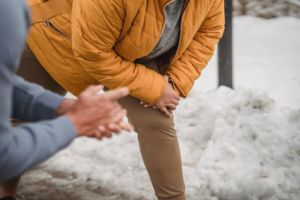
Fall can be the perfect time to exercise outdoors, but when a cold snap comes, you may find it more difficult to get moving. There are some advantages to exercising in cooler weather. You won’t get overheated as quickly or have to deal with humidity. Unfortunately, many people experience more muscle and joint pain when temperatures fall.
Here’s what your cold weather pain may be trying to tell you and what you can do about it.
Why Do Cold Temperatures Cause Pain?
There are several reasons why you may experience more muscle and joint pain when cold weather moves in. The first reason is that atmospheric pressure decreases in the winter. This allows tissues in joints to expand and can cause pain, especially in small joints. When you get cold, your body tries to preserve your vital organs by redirecting blood flow to the core of your body and away from your extremities. This can cause stiffness and pain in both muscles and joints. Cold weather can also thicken the synovial fluid that is supposed to cushion and lubricate your joints, causing it not to work as well.
Other factors, like seasonally related depression and less exercise, can also impact pain levels. People with depression and anxiety are often more sensitive to pain, and cold, cloudy weather often has a negative effect on mood. It’s also common for people to move less when it’s cold outside. A sedentary lifestyle can cause more joint and muscle pain and stiffness.
When Should I Be Concerned?
So far, none of the reasons we’ve looked at are related to any kind of injury, but sometimes joint pain that acts up in the cold can be an early warning sign. This is especially true if the joint that is hurting is one that you overuse. For instance, if you type every day and your hands and wrists hurt more when it gets cold. Knees are also common offenders in cold weather.
Cold weather can exacerbate existing problems. For instance, inflammatory conditions like tendonitis and carpal tunnel can worsen due to tissue expansion caused by cold weather. In addition to thickened synovial fluid and less circulation, this expansion can also make arthritis pain worse. You may not know that you have early-stage arthritis until cold weather makes it act up. If you have a consistently sore joint in cold weather or notice swelling or extreme stiffness, you should consult your chiropractor. Arthritis is much more treatable when it’s caught early before extensive cartilage damage occurs.
If There is a Problem with My Joints, What Can I Do?
Common joint problems like tendonitis, carpal tunnel, tennis elbow, and arthritis can all be treated. There are several injections available that can reduce inflammation and pain and encourage your body to heal. Corticosteroid and non-steroid anti-inflammatory injections like Toradol can be used for short-term inflammation and pain relief. This is enough for some types of conditions to allow the body to heal on its own without excess inflammation getting in the way.
For more chronic problems, PRP injections and hyaluronic acid injections can be used. PRP stands for platelet-rich plasma. These injections use blood collected from the patient that is processed to isolate the clear liquid portion (plasma) and the platelets. These are then injected into the affected joint or soft tissue. The platelets in the plasma are specialized cells that send chemical signals to the body to encourage healing. PRP has been proven to be a safe and effective treatment for pain, inflammation, tendon damage, and arthritis.
Hyaluronic acid is often used in the treatment of knee pain on its own or alongside PRP injections. Hyaluronic acid (HA) is a substance produced by the body to lubricate joints and plump up the skin. As we age, our bodies produce less of it, and this can contribute to joint pain and cartilage damage. When injected into an arthritic joint, HA reduces inflammation, coats nerves, and protects cartilage. Treatments like these can reduce pain and stiffness even in people with severe arthritis. They are most helpful for healing when arthritis is caught early. In these cases, PRP and HA injections can slow the progression of the disease.
Can I Exercise in Cold Weather if My Joints Hurt?
Exercise may seem like the last thing you want to do if you are in pain, but it’s one of the most effective treatments for joint pain and stiffness. When working out in cold temperatures, be sure to wear layers and do a proper warm-up before starting your workout. As long as you keep yourself warm and hydrated, you should be able to work out in cold weather. Working out indoors is also a good option in colder temperatures. Find a workout that you’ll look forward to doing and make it part of your routine. Healthy people should aim for about 150 minutes of moderate exercise per week. You should notice a reduction in joint pain after you become more active.
Exercise helps pain in several ways. It increases circulation, helps to regulate your mood, and can prevent you from gaining too much weight. Being overweight is a key risk factor for joint pain. If you have a joint that hurts too much for you to work out, see your provider right away. Taking care of sore joints quickly can allow you to live a more active lifestyle that will improve your overall health.
Joint Pain Treatment in Houston
At Vanguard Spine & Sport, our providers have years of experience treating joint pain with injections and other therapies. We can help you get off the couch and back to being active. Schedule a consultation to find out more about our innovative treatments for joint pain.





